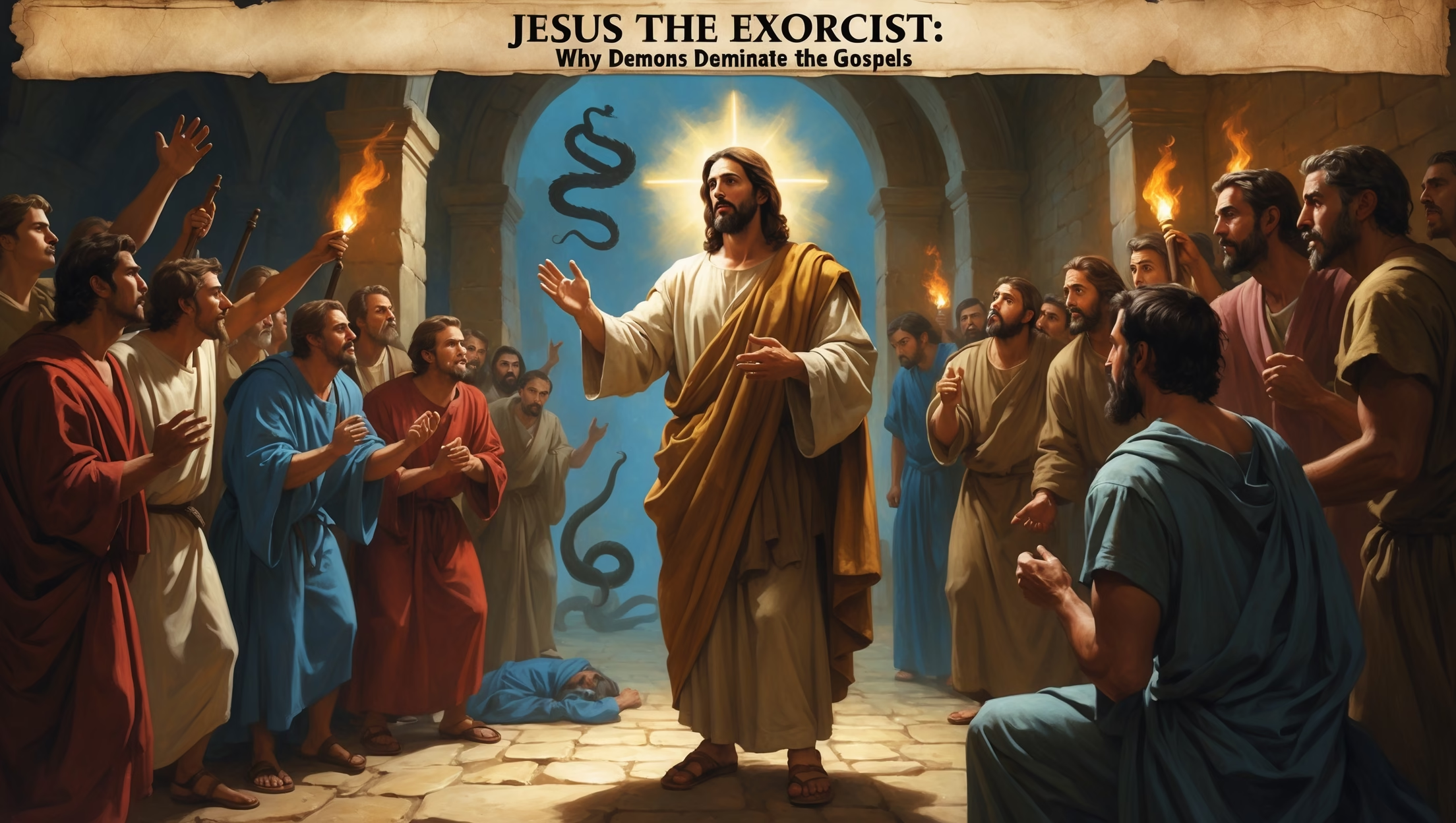Spiritual Warfare in First-Century Palestine
Among the miracles recorded in the Gospels—healings, feedings, calming storms—one category appears with striking frequency: exorcisms. Jesus casts out demons in synagogues, graveyards, private homes, and open countryside. In fact, more space is given to exorcism accounts than to any other type of miracle. Why this emphasis? The answer lies partly in the cultural setting of the first century, partly in the theological meaning of Jesus’ mission, and partly in the way these encounters reveal His identity.
The Cultural Backdrop
Jewish Views of the Spirit World
The Jewish world of Jesus’ day held a rich and complex understanding of spiritual realities. The Dead Sea Scrolls from Qumran reveal a worldview in which the cosmos was divided between the “sons of light” and the “sons of darkness,” with angels and demons locked in a cosmic struggle. Evil spirits were believed to influence human behavior, cause illness, and oppose God’s purposes.
This wasn’t superstition in the modern sense—it was a theological reading of history. For Jews steeped in the Hebrew Scriptures, the reality of unseen spiritual forces was woven into their understanding of covenant life and eschatology.
Greco-Roman Beliefs
In the wider Roman world, belief in spirits and supernatural forces was equally strong, though often tied to folk healing, magic, and astrology. Illnesses like epilepsy were sometimes attributed to spirit possession. Mark 9:17–29 records a boy who suffers violent seizures, interpreted by his father as demonic oppression—a view shared by much of the ancient world.

Jesus’ Unique Authority
No Rituals—Just a Word
Ancient Jewish exorcists, as described in texts like the Testament of Solomon, used elaborate rituals, incantations, and physical objects to expel spirits. Jesus, by contrast, simply commands: “Be quiet! Come out of him!” (Mark 1:25). No magic formulas, no sacred objects—just His word. This stunned eyewitnesses and marked Him as utterly different from other miracle workers of His time.
Public and Immediate Results
These confrontations were often dramatic: a demonized man in the Capernaum synagogue convulsing before collapsing in peace (Mark 1:23–26), or a legion of spirits driven into a herd of pigs (Mark 5:1–13). Such scenes weren’t just healings—they were public demonstrations that an invading Kingdom was breaking Satan’s grip in real time.
Theological Significance
The Kingdom in Action
In Luke 11:20, Jesus explains the meaning of His exorcisms: “If I drive out demons by the finger of God, then the kingdom of God has come upon you.” Every exorcism was a skirmish in a larger war—a tangible sign that God’s reign was breaking into the present age.
Messianic Identity
Remarkably, demons often recognized Jesus before humans did. In Mark 3:11, they cry out, “You are the Son of God!” This early recognition hints at the spiritual dimension of His mission: even before the disciples fully understood, the demonic realm knew who He was and feared the authority He carried.
Training for the Disciples
Exorcism was not just Jesus’ work—it became part of the disciples’ mission. In Mark 6:7, He sends them out with “authority over unclean spirits,” a training ground that would later expand after Pentecost into the church’s spiritual warfare and healing ministry.
Modern Parallels
Deliverance and Discipleship Today
In much of the Global South—particularly in Africa, Latin America, and parts of Asia—deliverance ministries are central to Christian life. These ministries see themselves as continuing the pattern of Jesus’ exorcisms, confronting spiritual oppression as part of evangelism and pastoral care.
In the West, however, such practices are often met with skepticism, with psychological and medical explanations preferred for behaviors once attributed to demons. Some churches integrate both approaches, recognizing that spiritual and psychological dimensions can coexist and require discernment.
Popular Culture and Perception
The modern imagination has been shaped as much by Hollywood as by the Bible. Films like The Exorcist (1973) have cemented a terrifying, ritual-heavy picture of exorcism far removed from the brevity and authority of Jesus’ encounters. Meanwhile, academic “clinical demonology” studies—often in the context of anthropology or pastoral theology—try to separate cultural expression from genuine spiritual phenomena.
Why It Matters
The prominence of exorcisms in the Gospels is not an accident of history. They reveal the spiritual landscape of Jesus’ ministry, the immediacy of the Kingdom of God, and the scope of His authority—not just over sickness and nature, but over the unseen powers that enslave human lives.
For the early church, these stories were more than proof of divine power; they were announcements that the long-awaited Messianic age had begun. For the modern believer, they remain both a challenge—to take spiritual warfare seriously—and a comfort, that no power of darkness can withstand the command of Christ.










